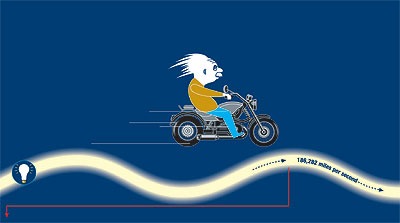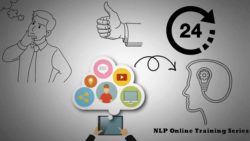Some years ago on an NLP training, I was running a class for Swedish Students and was delivering information about metaphors in NLP.
At one point, I was asked by a female student, “what exactly is a metaphor?” I answered that it was just like a story but has very influential pieces to it. “Why don’t you just call it a story then?” was the retort I got back.
Here’s how Wikipedia describes Metaphors:
After consideration, I decided not to answer her question directly, or challenge the challenge, so I told her this:
“Just imagine, in times before newspapers, television, internet or any kind of expanded communication systems, other ways had to be evolved to allow people to know what was going on in the world. When you tune in to the way they did this, it was in the form of poem, plays and songs. Inside these forms is all the information you may need.”
Metaphor: the use of a word or expression “which in literal usage denotes one kind of thing or action [but] is applied to a distinctly different kind of thing or action, without asserting a comparison”.
Metaphor is not just a function of language…of mere words…human thought processes are largely metaphorical…the human conceptual system is metaphorically saturated and defined.
The term metaphor originally comes from Greek metaphora (meta, meaning ‘over’, and herein, ‘to carry’). This transfer (or carry) of meaning is within all cultures and languages, and has a long history of use as evidenced in the teaching of Aristotle and Plato.

Metaphor has been central to the study of rhetoric and philosophy from Aristotle to the present day. Moreover, since at least the 1970s, the study of metaphor has continued to grow and a serious subject of scrutiny within linguistics, sociolinguistics, sociology, psychology, and education. According to Andrew Ortony, “metaphors are necessary and not just nice”, and they explains that there are various ways in which metaphor can facilitate learning. Metaphor can impress a concept or idea through the powerful image or vividness of the expression.
Metaphor can also capture the inexpressible. In fact, what a metaphor conveys is virtually impossible to express in any other way without losing the potency of the message. In addition, metaphor aids compactness in that chunks of the well-known experience can be transferred to less well-known contexts. It is this transference from one context of phenomena to another that manifests the creative process.
From personal experience, metaphors are the most powerful ways of getting information across that I have found! Different uses of metaphor reflect people’s sociocultural constructions of the world and can indicate what is significant in a particular culture and what is personally significant to those who create metaphors. Many have argued that metaphors make us, rather than us making metaphors (Stacey, 1997) and this influence may have more significance than we realise for children’s development.
Think back to the special stories that have influenced you in your life and notice why. What happened inside you when you hear/heard these metaphors?
If you were to shadow one of your classes through a school day, you’d probably be exposed to a wide range of teaching techniques. Some aspects of our colleagues teaching can really make a difference to our own lessons. I’ve outlined some different techniques below that can really help to motivate pupils and get them to approach your subject from an unexpected angle.
Figurative language, for instance, doesn’t just belong in the English lesson. Metaphors in particular can be effective and powerful learning tools when used in other subjects. They can:
- link abstracts to concrete language
- open the mind to multi levels of understanding
- promote and encourage emotions
- aid memory for all students by creating associations or links.
(This is especially effective for learners with Specific Learning Difficulties and, in particular, those with short-term memory issues.) - facilitate unspoken or unconscious learning
- help learners to make sense of information and issues
- gain understanding about the ways your learners ‘see things’.
You can use them as a device to springboard discussion: metaphors allow pupils to explore their feelings in a safe, non-judgmental way and to clarify these emotions by using revealing images or comparisons.
Multi-sensory Imagination
When providing activities for your learners, consider what sort of language you are using to evoke a response. To evoke a multi-sensory response, ask multi-sensory questions:
Kinaesthetic imagination: ‘Imagine how that would feel? How might you act on this?’
Visualisation: ‘Can you imagine what that would look like?’
Auditory imagination: ‘Imagine you can hear…what would it sound like?’

You can use these three basic questions in a variety of settings. For example in a geography lesson; you could use this technique as a starting point or review of volcanic eruption. Ask students to collect information from different sources to describe the sensory experience you would have if you were in the presence of a volcanic eruption. Present the sensory experience in class as an audio news report from a volcanologist. The information given should include as many senses as possible.
Smell: Noxious petrol-like fumes, sulphur – rotten eggs – burning trees.
Touch: Singed hair and eyebrows, heat.
Sound: Jets of lava, like heavy rain, explosive volcano, loud crashing explosion, a flow like a bulldozer pushing a heavy load of bricks.
Sight: Colour of lava – bright orange, bright red, brownish red, black.
Most information can be delivered to all age ranges via multi-sensory activities. It can add an extra dimension to:
- Story telling – it can help pupils to stand in the character’s shoes, help in their comprehension of the story, and can evoke a particularly descriptive or imaginative response.
- Creative writing – it can help to elicit a creative sensory response and enhance awareness of sensory language.
- History, Geography or English literature – it can help students to set the scene by recapping the sensory information that they already know. Having asked such questions, you can add aspects of what they don’t know.
- As an introductory session or a ‘review’ technique.
And you never know how much difference a metaphor can make in someone’s life.
I was asked to talk to a 6 year old girl, Megan by her mother. Megan had contracted Asthma three years previously and her mother knew how I used metaphor to hear and speak effectively with kids and adults. I used a toy to talk about whatever was happening in Megan’s life and it went well. She could talk much more freely when it was about a rabbit and the rabbit knew things that Megan didn’t, even if the rabbit was herself!
After this “talk” we had, she seemed satisfied with what we had discovered about some undisclosed “truths” in her life, but then turned to me and asked me a question that rooted me to the spot. She put her head in her hands and said to me “I just wish I knew more about what life is all about…”
Just imagine the responsibility I felt at that time. I stood there, with a thousand thoughts whirring around amuck inside my mind. I looked through the window and let providence guide me. As I saw the flowers and plants waving gently in the wind, something came to me that would let us both feel more relieved.

“See that plant outside Megan”, I said. “Yes”, she replied happily. “Well as you watch that plant grow, it would start from just a stem and growing leaves as it gets older. It doesn’t know what flower it will be all at once, but all the information for the plant is in the seed, so the plant will always know what to do, but only one leaf at a time”. She was totally pleased with her metaphor and hurried back to life once more, not encumbered by her past issues.
Before that day Megan had Asthma every year, for the previous three years. Her Asthma never came back to this day as far as I know! So am I saying that metaphor cures illnesses? No, not really, yet the proof is evident of how they get messages across effectively and deeply.
Another metaphor that strikes a chord for teaching or trainers in this:
I was returning from school one day and a runaway horse with a bridle on sped past a group of us into a farmer’s yard looking for a drink of water. The horse was perspiring heavily. And the farmer didn’t recognize it so we cornered it. I hopped on the horse’s back. Since it had a bridle on, I took hold of the tick rein and said, “Giddy-up.” Headed for the road, I knew the horse would turn in the right direction. I didn’t know what the right direction was. And the horse trotted and galloped along. Now and then he would forget he was on the highway and start into a field. So I would pull on him a bit and call his attention to the fact the highway was where he was supposed to be. And finally, about four miles from where I had boarded him, he turned into a farm yard and the farmer said, “So the runaway has come back. Where did you find him?” I said, “About four miles from here.” “How did you know you should come here?” I said, “I didn’t know. The horse knew. All I did was keep his attention on the road.”
One of my favourite metaphors talks about commitment:
There was a time as a boy and as men when caps were an important part of life and you had one or two caps for life. When the boys used to run through fields and came across a wall or obstacle that couldn’t climb easily, they’d throw their caps over the obstacle. That way they knew they would make sure they’d have to climb it!
“So what is a metaphor?” I was asked back in Sweden. And why didn’t I call them just stories?
Perhaps you can now see for yourselves that a metaphor can carry the narrative, emotion, pictures, sounds, feelings and thinking that connect with the inner minds of each speaker and listener. You could say that a metaphor will “carry” a story.
So, on your next NLP Training Course, look out for being taught these fundamental tools well. They will save you a thousand, thousand words, making your day lighter and easier 🙂



